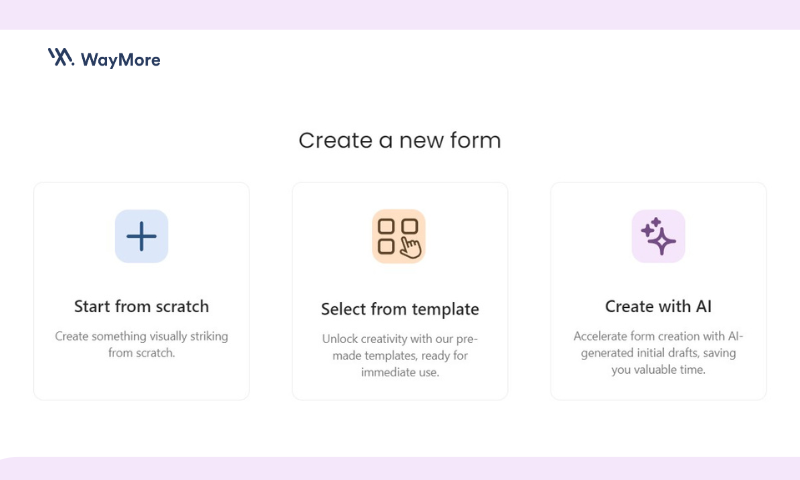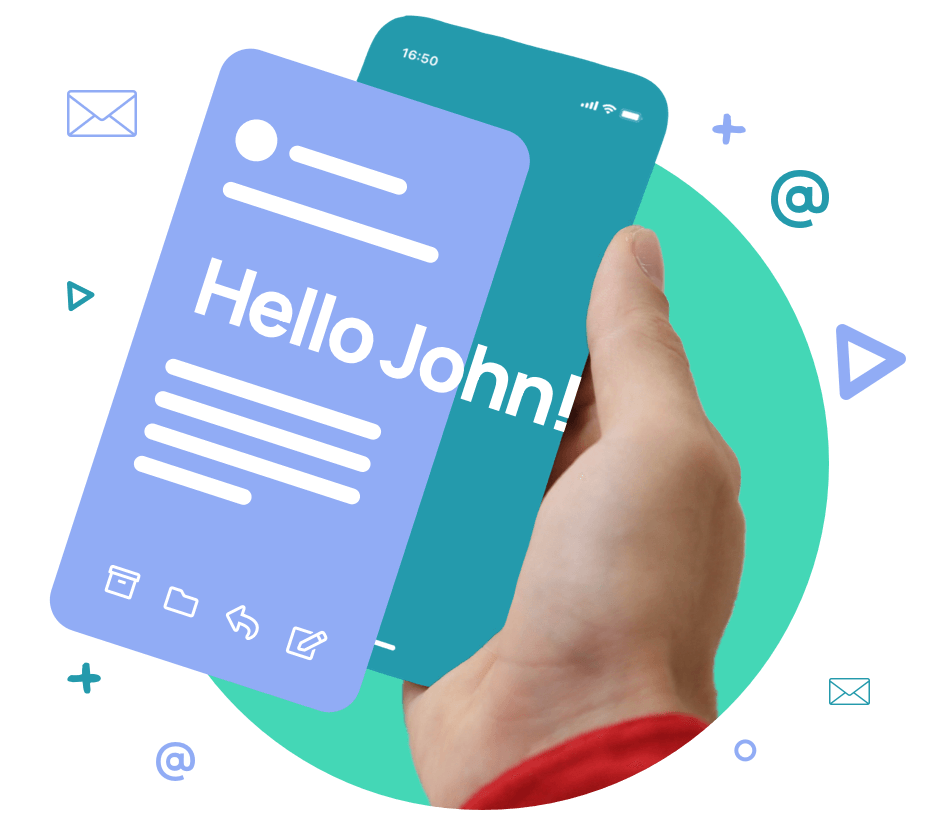Quick Links
In today’s competitive e-commerce landscape, traditional forms can feel impersonal and hinder conversions. According to a report by Exploding Topics, a whopping 74% of eCommerce companies have a website personalization program in place. Conversational forms are a powerful tool to take that personalization a step further.
Conversational forms transform static questionnaires into engaging dialogues that increase sales and personalize the customer journey.
According to a study by ProFaceOff, improving checkout design can reduce form abandonment by as much as 35%, which translates to nearly $260 billion in recovered orders annually. This highlights the importance of optimizing the checkout process for a smoother customer experience.
What is a conversational form?
Imagine a form that feels more like a chat with a friendly helper than a static questionnaire. Conversational forms use a question-and-answer format, guiding customers through the process in a natural, engaging way.
How do conversational forms work?
Conversational forms typically start with a broad opening question, like “What are you looking for today?”
Based on the customer’s response, the online form dynamically adapts, presenting follow-up questions relevant to their needs.
This creates a personalized experience that feels more like a conversation than a form.
Conversational form benefits for ecommerce
Here’s how conversational forms can supercharge your e-commerce business:
- Increase conversion rates: By making the form-filling process more engaging and interactive, customers are more likely to complete it. Plus, the design which plays a big part in increasing conversion rates with conversational forms.
- Improve customer experience: Conversational forms feel less intimidating than traditional forms, leading to a more positive customer experience.
- Reduce cart abandonment: Conversational forms for abandoned cart recovery can be a powerful tool. These forms can re-engage customers who have left items in their cart without completing the purchase. By prompting them with a friendly conversation and addressing any hesitation they might have, conversational forms can help win back those sales.
- Personalize the customer journey: With conversational forms you can personalize the customer journey by gathering information about customer preferences and tailoring product recommendations accordingly. This can be a powerful tool for answering the age-old question: “how do I recommend someone a product?” By understanding a customer’s specific needs and interests, you can suggest items that are a perfect fit for them, increasing the chances of a sale.
How conversational forms drive sales & personalization
Conversational forms unlock a powerful combination of engagement and data collection:
Engagement
Unlike static forms, conversational forms feel like a friendly chat. This keeps customers engaged, increasing the likelihood they’ll complete the form and progress through the buying journey.
Personalized Product Recommendations
Ask dynamic questions based on initial responses. For example, a shoe store might ask: “What kind of shoes are you looking for?” followed by “What occasion will you be wearing them for?” Based on the answers, the form can suggest sneakers for running or boots for hiking. This personalization increases the relevance of recommendations, leading to higher conversion rates.
Reduced Cart Abandonment
Conversational forms can be used for abandoned cart recovery. A friendly nudge with a question like “Hey there! Looks like you left some items behind. Can we help you with anything?” can re-engage customers and address any last-minute hesitation they might have, creating a sense of urgency to complete the purchase.
By leveraging engagement, personalized recommendations, and reduced cart abandonment, conversational forms empower you to create a more dynamic and personalized customer journey, ultimately driving sales for your e-commerce business.
Conversational Form Best Practices

- Start with a clear opening question: Grab attention and guide the conversation. Examples: “What are you looking for today?” or “Need help finding the perfect (product category)?”
- Ask branching questions: Tailor questions based on previous answers. This personalizes the experience and gathers valuable data.
- Keep it concise: Don’t overwhelm customers with lengthy forms.
- Offer clear calls to action: Guide customers towards the next step, whether it’s browsing products or completing a purchase.
If you are struggling with this and do not want to do any heavy lifting you can use AI. WayMore is the only form builder with AI. Let AI do all the work and enjoy sales increasing.
Conversational forms for product recommendations
One powerful application of conversational forms is in product recommendations. Imagine a customer browsing your shoe store website. A traditional form might simply ask for their shoe size. However, a conversational form could ask:
- “What kind of shoes are you looking for?” (e.g., sneakers, boots)
- “What occasion will you be wearing them for?” (e.g., casual wear, running)
- “Do you have any specific preferences, like brand or color?”
Based on the customer’s answers, the form can then suggest personalized product recommendations, increasing the chances of a sale.
How to write product recommendations?
Here are some tips for writing effective product recommendations:
- Focus on customer needs: Tailor your recommendations to the specific needs and preferences expressed by the customer. Showcase relevant products.
- Highlight product benefits: Don’t just list features; explain how the product will benefit the customer.
- Use clear and concise language: Keep your recommendations easy to understand, avoiding technical jargon.
Finding the right conversational form templates
Several online platforms, like WayMore, offer conversational form templates specifically designed for e-commerce businesses. These templates provide a starting point, allowing you to customize them to fit your specific needs.
Look for templates that offer features like:
- Product recommendation templates: These templates can help you create personalized product suggestions based on customer input.
- Abandoned cart recovery options: Use conversational forms to re-engage customers who have abandoned their carts.
- Easy integration with your e-commerce platform: Ensure the chosen platform integrates smoothly with your existing online store.
Conversational forms are a powerful tool when designed strategically. For a deep dive into crafting exceptional conversational forms, check out WayMore’s insightful guide on how to master conversational form design.
Conclusion
Investing in conversational form templates can be a game-changer for your e-commerce business.
By creating a more engaging and personalized customer experience, you can increase conversion rates, reduce cart abandonment, and ultimately supercharge your sales.
Curious to learn more? WayMore’s experts are ready to chat!
FAQs
Conversational form templates are interactive online forms that mimic natural conversations, guiding users through a series of questions and responses rather than presenting static fields. These templates are designed to engage users and personalize their experience. Check out these 7 conversational form examples to get a deeper understanding.
Unlike traditional forms, which typically present users with static fields to fill out, conversational forms use a dynamic question-and-answer format. They adapt based on user responses, creating a more engaging and personalized interaction. Find all the details on WayMore’s latest srticle on the conversational vs classic forms debate and choose the form type that is right for you.
Conversational forms offer several benefits for e-commerce businesses, including increased conversion rates, improved customer experience, reduced cart abandonment, and personalized product recommendations.
Absolutely! Conversational forms are proven to boost conversion rates by engaging users in interactive dialogue instead of static forms. However, selecting the right design is crucial for optimal results. Explore more insights on effective conversational form design in WayMore’s latest blog: Conversational Form Design
Several online platforms, such as WayMore, offer conversational form templates specifically designed for e-commerce businesses. These templates provide a starting point for businesses looking to implement conversational forms on their website, allowing them to customize the forms to fit their specific needs.
Curious to learn more? WayMore’s experts are ready to chat!




